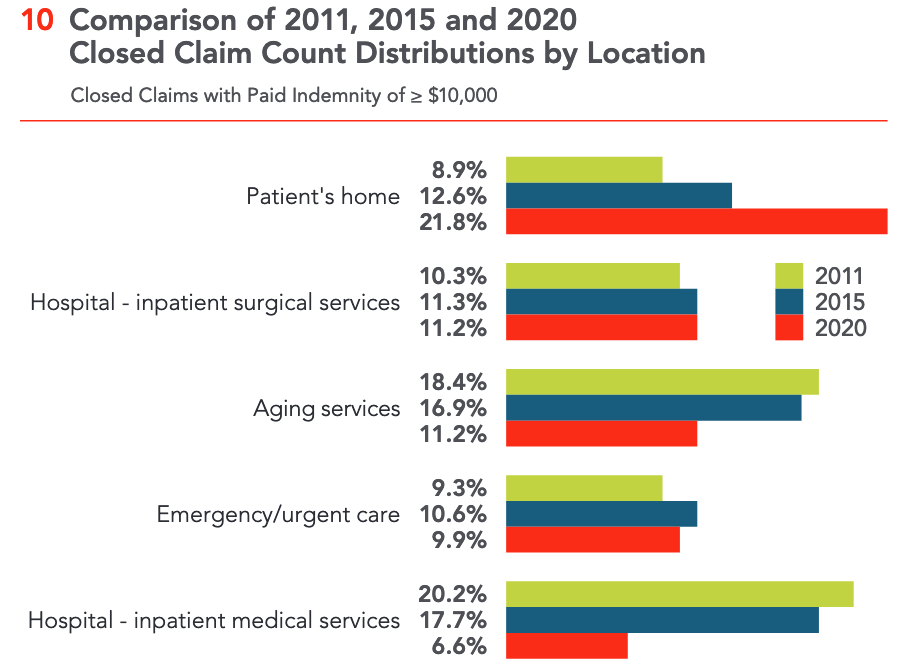Liability claims against nurses working in senior living and skilled nursing facilities have decreased significantly over the past decade, as more seniors prefer to live in their homes longer and receive home health care services.
That is one of the main takeaways by the latest nurse professional liability exposure claim report from CNA Healthcare Underwriting and the Nurses Service Organization (NSO). Insurance giant CNA reviewed 455 closed professional liability claims for the report, and compared the results to previous reports in 2011 and 2015.
The cases were closed between January 1, 2015 and December 31, 2019; involved a registered nurse, licensed practical nurse, licensed vocational nurse, or a nursing student; and resulted in indemnity payments of $10,000 or greater.
Home care closed claims accounted for 20.7% of total claim count in the most recent report, compared to 12.4% in the 2015 report and 8.9% nine years ago. Liability claims in aging services – consisting of independent living, assisted living and memory care, and skilled nursing – accounted for 10.5% of all claims. That is a 5.9% drop from 2015 and 7.5% compared to 2011.

The average indemnity for closed claims, however, increased 4% from 2015 to 2020, to $210,513. The average indemnity in aging service liability claims was $145,685.
The dropoff can be attributed to the growth in home health care services and health care technology, allowing seniors to be cared for in their homes. Additionally, the cost savings of staying at home, compared to moving to a higher care setting, has many seniors opting to age in place.
The report also revealed that nurses in leadership roles in aging services settings accounted for 38.7% of closed claims in the report, compared to 32.3% in a patient’s home. This may be attributed to a larger amount of responsibilities shouldered by nurses in senior living and skilled nursing settings, CNA Risk Management Consultant Lynn Pierce – BSN, RN, CPHRM told Senior Housing News.
Nurses in leadership roles in aging services settings may be responsible for developing and overseeing procedures and policies, ensuring clinical regulatory compliance, developing and executing quality improvement programs, and coordinating hiring, training and staff development. The scope of services and care being provided, the size of the facility and how the facility is managed are other contributing factors.
The average total indemnity incurred of nurses in leadership roles in aging services was $181,335.
“These are highly visible roles as the nurse leader typically interacts with residents and family members on an ongoing basis,” Pierce said.

